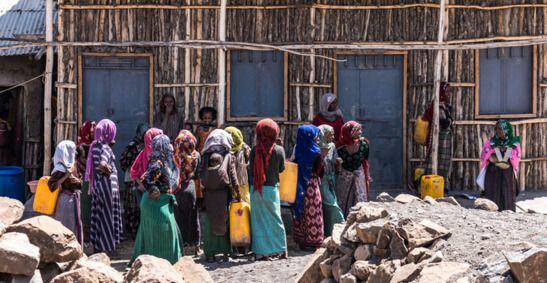SaveTigray sells digital photos of the tragedy on its NFT marketplace and donates the proceeds to charities.
In Ethiopia’s Tigray region, citizens have been ravaged by war since fighting broke out eight months ago. The result, according to UNICEF, is that 400,000 people are suffering from starvation, 1.8 million are on the brink of starvation, and tens of thousands have already died.
However, the charity SaveTigray has developed an innovative method of fundraising for victims: non-fungible tokens (NFT).
Mirna Saraswati of SaveTigray explains : ” Last year, we planned to create NFTs from fair trade art objects created by Tigray women. But the arrival of the war in November put an end to these plans. So we decided to create NFTs from interpreted photos of the tragedy. We will sell them on our NFT market, and we will donate the proceeds equally to four groups: the World Food Programme , the International Rescue Committee, UNICEF and Save the Children ».
On Monday, the World Food Programme said on Twitter that he had sent a humanitarian convoy to the area, but that he had to ” continue to deliver 1,000 tons of life-saving food in 40 trucks a day to Tigray to meet the emergency food needs of 2.1 million people ».
Roads and bridges to Tigray have been blocked or destroyed by government forces, which have denied blocking aid, while the Ethiopian government and Eritrean troops stationed in the region have been accused of war crimes.
Savannah Partridge, Chief Operating officer of SaveTigray, said : ” While we want to raise money for the victims, we really want to spread the news to millions of people. The Ethiopian government has announced that aid flights can resume from the capital, but so far none has been approved. Public outcry may force them to act ».
As most NFTs are minted and traded on the Ethereum blockchain, which currently uses the energy-intensive Proof of Work mechanism, their impact on the environment is an urgent matter.
Partridge added : ” We think NFTs are here to stay. We have solved the biggest problem associated with them, which is energy consumption. Our platform uses 10 million times less energy than standard platforms based on Ethereum [sic]. Like any other NFT, the provenance of each work can be easily traced through blockchain. And buyers can continue to use each image to raise money for the cause, if they wish. NFTs receive revenue every time they are sold, allowing them to continue raising money forever ».






